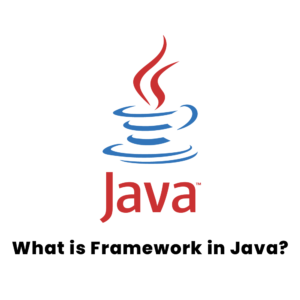Java Framework
As Java developers aim to build scalable, secure, and maintainable applications, frameworks play an indispensable role in streamlining development. But what exactly is a framework in Java, and why is it so important? In this blog post, we will explore the concept of frameworks, understand their purpose, and highlight the 7 key benefits they bring to Java development.

Visit our www.computerclimax.com website for more information technology resources.
What is a Framework in Java?
A Java framework is a pre-built set of tools, libraries, and best practices that provides a standardized structure to develop applications. Frameworks simplify coding by offering reusable components, reducing repetitive tasks, and promoting best practices. They act as a foundation that developers can build upon, allowing them to focus on creating unique functionalities instead of reinventing the wheel.
Some well-known Java framework include Spring, Hibernate, Struts, and JSF (JavaServer Faces).
Why Use a Java Framework?
When building a Java application from scratch, developers often face challenges like managing dependencies, ensuring security, and structuring the code efficiently. Frameworks handle much of this heavy lifting by offering a consistent architecture, simplifying tasks, and promoting DRY (Don’t Repeat Yourself) principles. This not only speeds up development but also enhances code quality and maintainability.
Now, let’s dive into the key benefits of using a framework in Java.
1. Faster Development
Using a framework in Java accelerates the development process by providing pre-written code for common tasks such as database interaction, input validation, and user authentication. For example, the Spring Framework includes built-in modules like Spring MVC and Spring Data that handle much of the heavy lifting when building web applications.
This speeds up development by allowing developers to focus on core features instead of writing boilerplate code. It’s particularly useful for complex, large-scale projects where manual coding would be too time-consuming.
Also Read: Threat Modeling in Java: 8 Proven Techniques to Boost Application Security
2. Better Code Organization
Frameworks enforce a well-defined structure, ensuring that developers follow a consistent approach to organizing code. In Java, frameworks like Struts and JSF encourage developers to follow the Model-View-Controller (MVC) architecture, separating the application’s business logic, user interface, and data access layers. This separation makes the code more maintainable, easier to test, and enhances team collaboration.
Having a structured project layout is essential, especially when working in a team or scaling the project over time.
Also Read: Learn about the MVC architecture in more detail from Oracle’s Java EE Tutorial.
3. Enhanced Security
Frameworks are designed with security in mind, offering built-in mechanisms to protect applications against common vulnerabilities such as SQL Injection, Cross-Site Scripting (XSS), and Cross-Site Request Forgery (CSRF). For instance, Spring Security is a powerful framework module that provides authentication, authorization, and other essential security features.
By leveraging security features provided by frameworks, developers can protect their applications without having to write security code from scratch.
4. Simplified Database Integration
Many Java framework include robust support for database interaction, abstracting the complexity of database access and manipulation. For example, Hibernate is a popular Object-Relational Mapping (ORM) framework that maps Java objects to database tables, simplifying the process of database CRUD (Create, Read, Update, Delete) operations.
With ORM frameworks, developers can work with databases using Java objects, eliminating the need for complex SQL queries and reducing database-related errors.
Also Read: What is Advance Java Programming
5. Cross-Platform Support
Java framework are platform-independent, meaning they can run on any operating system that supports Java. This makes Java framework ideal for developing cross-platform applications, whether for web, desktop, or mobile. For instance, Spring Boot is often used to create RESTful APIs that can be consumed by frontend applications across different platforms.
The cross-platform nature of Java framework ensures that your application is versatile, and can be deployed across multiple environments without requiring significant code changes.
6. Community Support and Updates
One of the major advantages of using a framework in Java is the vast community support and continuous updates they receive. Frameworks like Spring, Hibernate, and Struts are supported by large communities of developers and are constantly evolving to meet modern development standards.
Regular updates bring performance enhancements, bug fixes, and new features, ensuring that applications built with these frameworks remain efficient and secure.
Also Read: Follow the latest updates from the Spring Framework Community.
7. Improved Testing Capabilities
Java framework facilitate automated testing by providing tools and modules to ensure the reliability of your code. For example, Spring Boot integrates seamlessly with JUnit and Mockito, allowing developers to write unit and integration tests effortlessly. Testing frameworks help identify bugs early in the development cycle and ensure that the code behaves as expected.
This reduces the likelihood of introducing regressions and ensures that the application is stable before it goes live.
Popular Java Framework
Here’s a quick overview of some of the most widely used Java framework:
- Spring Framework: A comprehensive framework for enterprise-level applications. It includes Spring Boot, Spring MVC, and Spring Security.
- Hibernate: An ORM framework that simplifies database interactions by mapping Java objects to database tables.
- Struts: A framework for creating Java EE web applications using the MVC design pattern.
- JSF (JavaServer Faces): A UI framework for building server-side user interfaces.
Each of these frameworks has its unique strengths and is suited to different types of Java applications.
Conclusion
In summary, a framework in Java is a powerful tool that enables developers to build applications more efficiently by providing a standardized structure, reusable components, and essential features like security and database integration. The 7 key benefits outlined—faster development, better code organization, enhanced security, simplified database integration, cross-platform support, community backing, and improved testing capabilities—make frameworks an essential asset for Java developers.
Using a Java framework not only speeds up the development process but also improves the quality, security, and scalability of the application. Whether you’re a beginner or an experienced Java developer, mastering frameworks like Spring, Hibernate, and Struts will significantly boost your productivity and code quality.




2 Responses